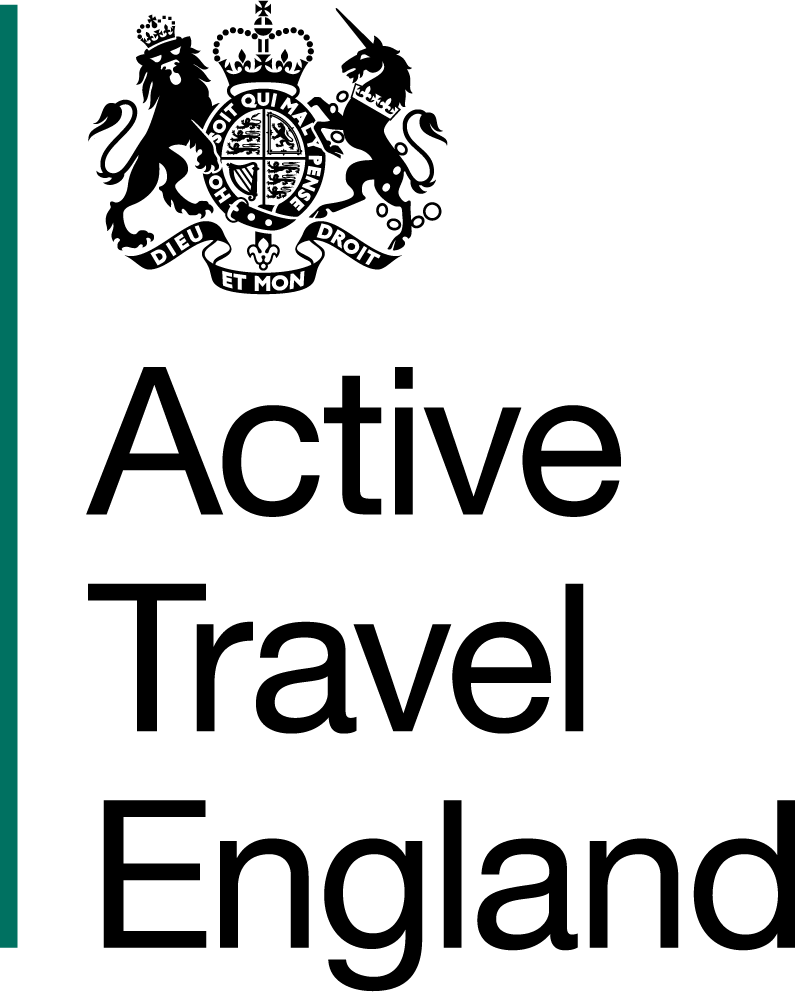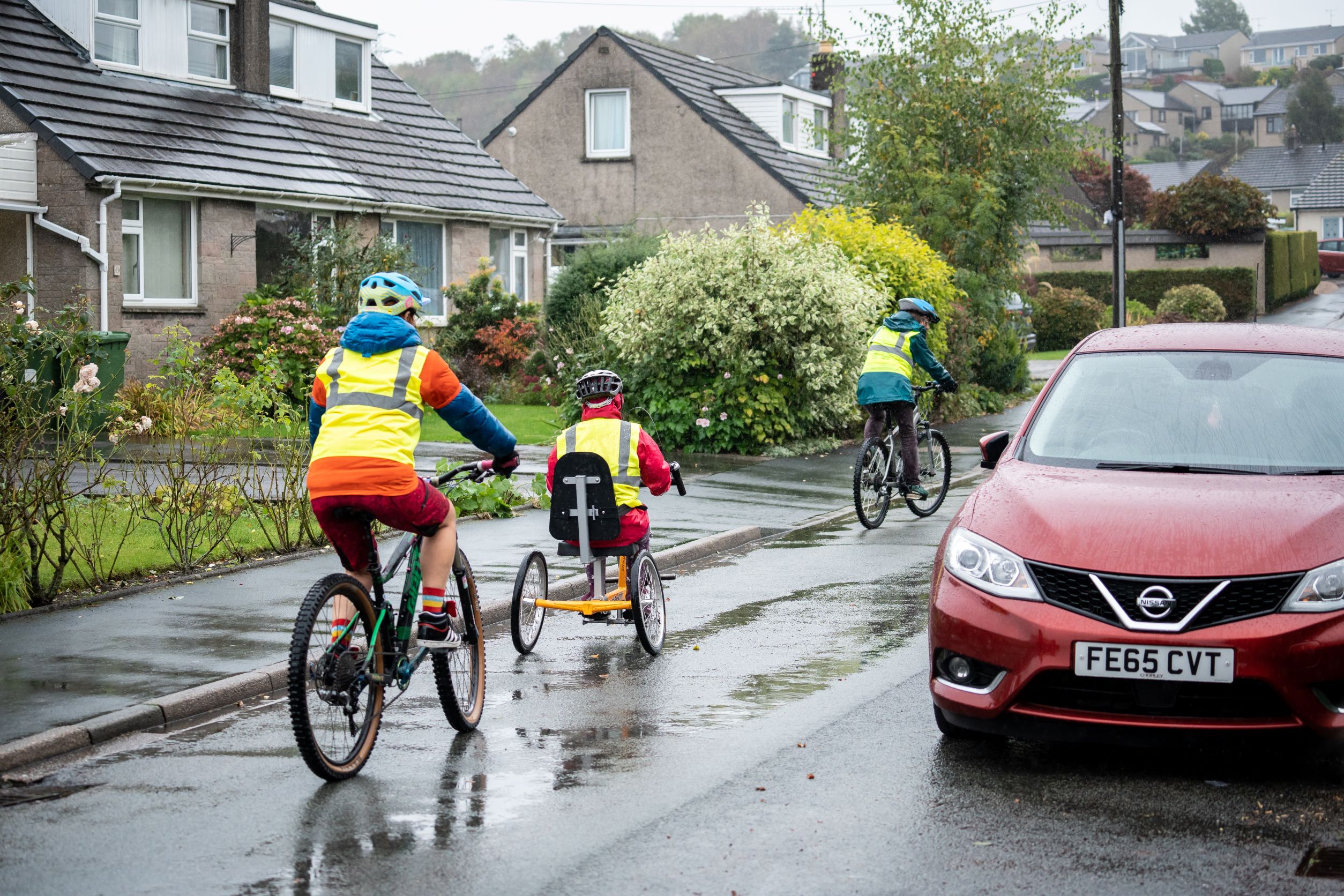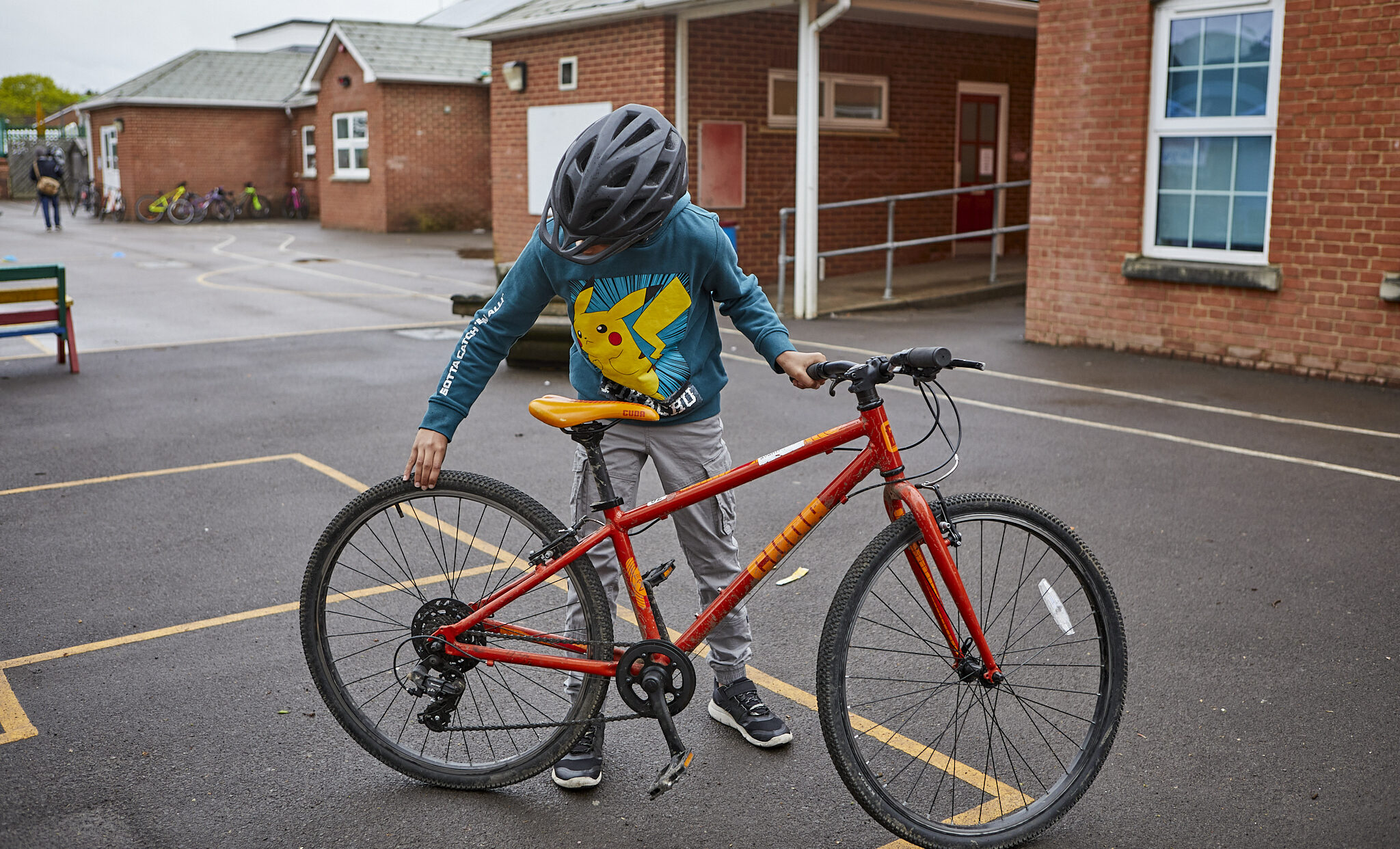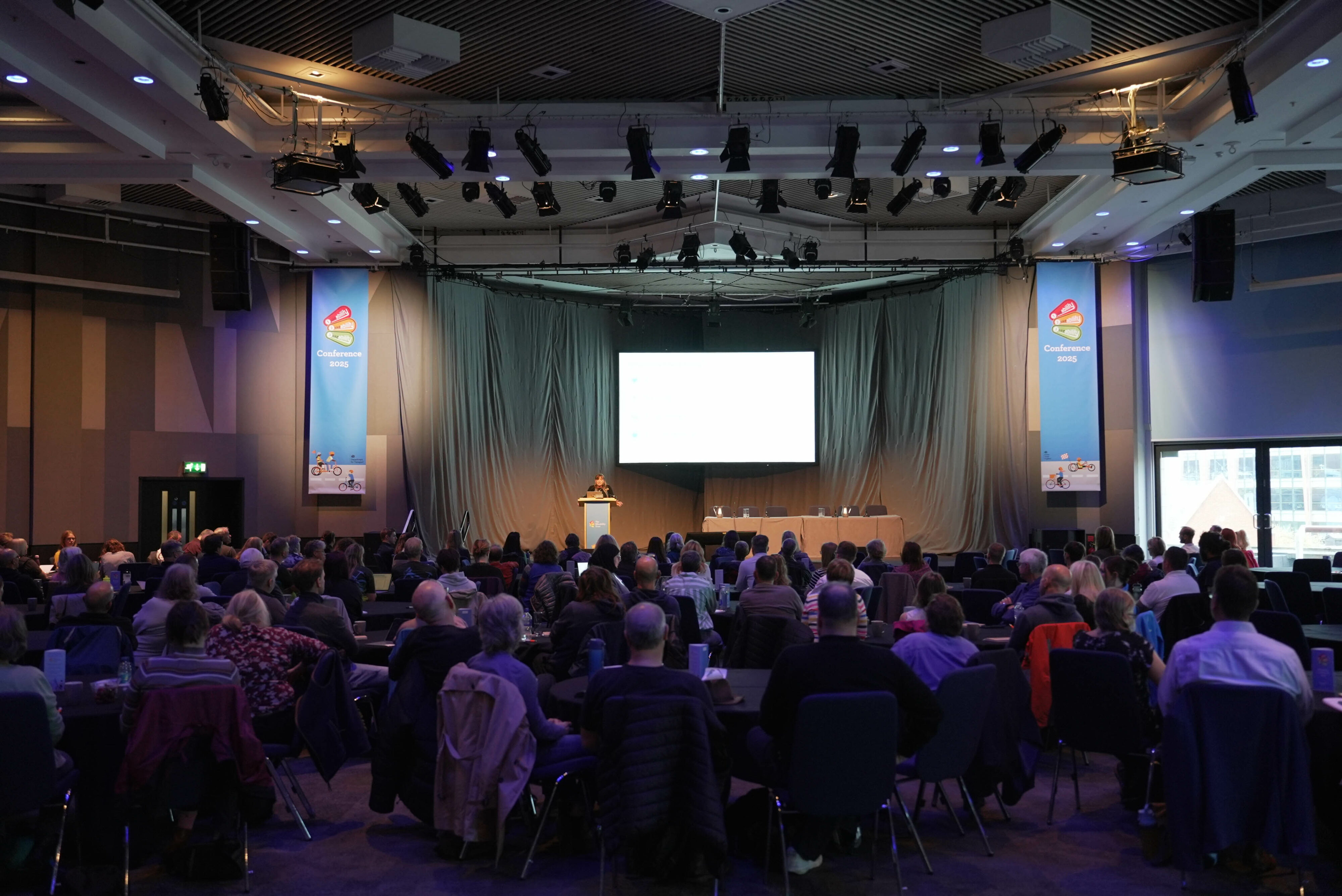I’ve cycled for as long as I can remember. My first cycle was a Raleigh Raptor because I used to be a big fan of dinosaurs. Together with my neighbours, I would spend hours riding round and exploring my local area. At secondary school I was the only girl who cycled to school so I led a solo campaign for a cycle rack which resulted in a shed success story.
I have since gone on to cycle wherever I have lived – from navigating the busy streets of Beijing to unreliable yellow pedals on the dusty roads of Burkina Faso! I even spent three weeks cycling around rural France with a cycle powered cinema one summer.
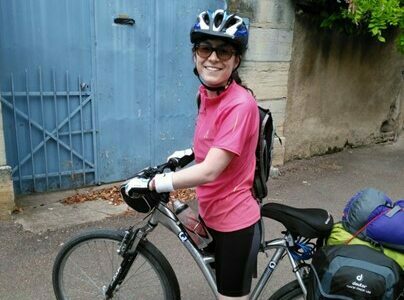

“At secondary school I was the only girl who cycled to school so I led a solo campaign for a cycle rack which resulted in a shed success story.”
Lucy cycling in France
Living with a disability
After working and volunteering abroad for a few years following university, I moved to London and continued to cycle until I caught a nasty bout of glandular fever. I was completely wiped out for months. My immune system was incredibly weak, and so was I. At the time I was doing multiple jobs and had little opportunity to rest and recover.
As a result of the severity of the infection, and pushing through, I developed ME/CFS (Myalgic encephalomyelitis/chronic fatigue syndrome) and fibromyalgia. These conditions can vary significantly between individuals but in my experience, this presents itself in the form of constant tiredness, muscle pain, hypersensitivity to noise and touch, as well as other issues. I then faced another setback when I caught COVID in the first wave in 2020. After this I was using a wheelchair to get around for a while.
Alongside no longer being able to work full-time and having to strictly manage my schedule to avoid any worsening of my symptoms, I also cannot ride a standard cycle anymore.
I remember my first time trying to cycle after glandular fever. I felt so upset and fatigued that I gave up. Instead, I reduced my walking distances, took regular breaks and relied on public transport. However, London is a fast paced and expansive city. I quickly realised that way of getting around and living was neither practical, nor sustainable.
Moving back home
So, in 2019, I moved back to my home city of Derby. I chose to live as close to the city centre as possible as, unlike London, public transport isn’t as efficient so I needed to be closer to the links that we do have.
I thought this would suffice but I found that the supermarket, work and my family weren’t easy to access by bus and I could only walk for around fifteen minutes. I have never learnt how to drive for financial, and now environmental, reasons. I was stuck.
Thankfully, electric cycles came to my rescue. I had been aware of their emergence, so I found a second hand Raleigh Array e-cycle on eBay. The first ride felt just like those rides around my neighbourhood as a child. I was overjoyed to be reunited with the freedom, independence and fun that cycling brings.
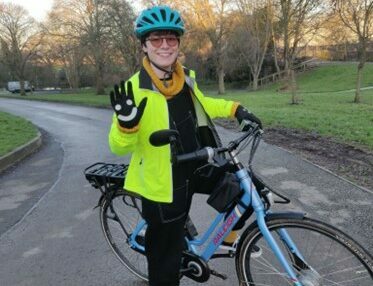

“The first ride felt just like those rides around my neighbourhood as a child. I was overjoyed to be reunited with the freedom, independence and fun that cycling brings.”
Lucy and her Raleigh Array. PHOTO: Hardy Saleh
My cycle, my mobility aid
We soon became inseparable, and my cycle became my mobility aid. I no longer used my wheelchair as I could ride everywhere I needed to go.
Unfortunately, my happiness was punctured by occasional quips of ‘you’re cheating’ as the whizz of the battery irked other riders, and an attempt to steal my cycle which led to me removing and carrying the battery like a baby from that point on.
I found the concept that I was ‘cheating’ by using an electric cycle demoralising. In those fleeting seconds when comments were made, I didn’t have the chance to explain how I longed to ride a standard cycle and why I couldn’t. Even if I did, it is likely they wouldn’t believe me. To them, I ‘looked’ fine.
Overcoming barriers
This is the biggest barrier I have faced in cycling, and working in the cycling sector. The invisibility of my conditions means my needs are dismissed, and my ability assumed. There is also little financial support available to buy adapted cycles, and the benefits system does not understand their use as mobility aids. Wheels for Wellbeing are doing outstanding work to address this.
As technology progressed, my trusty second hand e-cycle was starting to feel cumbersome and heavy. I had also just finished training to be a Bikeability instructor to lead sessions as part of the cycling community I set up and run, Spoke Out, which required me to lift my cycle and perform demonstrations.
Around this time, I became aware of the Swytch kit which is an e-conversion kit so you can adapt a standard cycle to add electric assistance. I was excited by the opportunity to have more choice, and to use a lighter cycle, at a more affordable cost. I bought and converted a second-hand Bobbin Brownie so I could more easily teach and worry less about potential theft as it was more subtle thanks to a smaller battery.
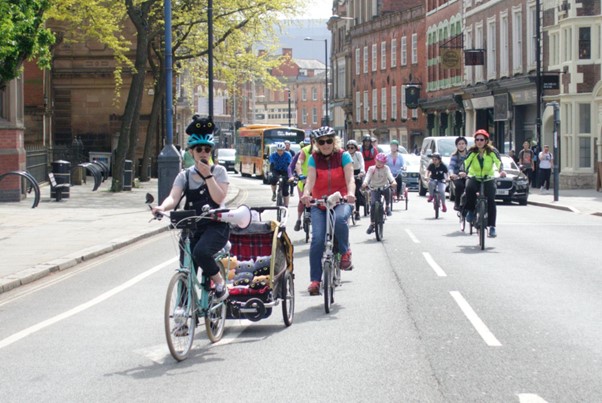

“I was excited by the opportunity to have more choice, and to use a lighter cycle, at a more affordable cost.”
Lucy leading a local Kidical Mass cycle ride to call for safer streets for cycling. PHOTO: Hardy Saleh
Advocating for accessibility
When I first became disabled, I thought I might never be able to cycle again. Through research and a welcoming community, I am now aware of so many adapted cycles to make cycling possible for a wide range of needs. From tricycles to tandems, there are many options out there for Disabled people. There are even organisations and community initiatives where you can test ride and borrow cycles, and see what would work best.
I have also become more mindful of the language I use, and how I campaign for better cycling infrastructure. I strive to be more inclusive and to advocate for accessible provision for all cycles and their respective riders.
Cycling has always been such a big part of my life. It’s been my primary form of transport, my exercise and now my mobility aid.
I used to feel sad that I had lost the ability to cycle without support but now I’m proud that my e-cycle helps to get me from A to B. I’m happy to explain why I need it. I feel confident to challenge the ‘cheating’ comments.
After a few weeks with my newly converted Bobbin, I decided to get it spray painted bright yellow. I want my cycle to stand out and spread the joy of cycling to everyone, regardless of ability.
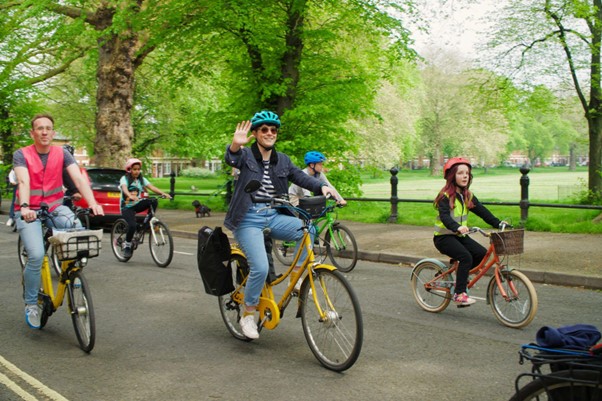

“Cycling has always been such a big part of my life. It’s been my primary form of transport, my exercise and now my mobility aid.”
Lucy waving from her spray-painted yellow e-cycle. PHOTO: Hardy Saleh
Find out more about Spoke Out, who support, encourage and empower more girls, women and non-binary people to cycle in Derby, on their website here.
